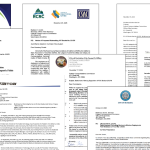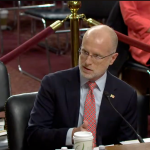
In February 2025, consumers reacted to reports that toxic flame retardant chemicals had been found in black plastic spatulas made from recycled plastic. Sales of black nylon utensils plummeted over 20%, while sales of stainless steel and silicone products soared 13% and 70%.
This sharp consumer reaction highlights a truth: Investors are exposed to financial risk from chemical hazards that many companies fail to identify, disclose, or address. The result is financial exposure that can be sudden, severe, and avoidable.
This is a bellwether moment for US-based investors. Failing to integrate safer chemistry into due diligence and other risk models doesn’t just ignore sustainability — it exposes capital to avoidable financial and legal risks that could impact long-term returns.
What’s the next PFAS?

The litigation on PFAS, the “forever chemicals,” offers a stark example. These chemicals, which are linked to a long list of health effects including cancer, infertility, and autoimmune disease, have been found in everything from clothing and razors to footwear and mascara. Settlements total billions, and future damages could stretch into the hundreds of billions.
Meanwhile, although many federal environmental regulations are being curtailed, state regulation of PFAS and other chemicals in consumer products is ramping up. More than a dozen states have restricted PFAS in consumer products, numerous others have banned additional chemicals or require disclosure of ingredients in cosmetics and personal care products, and consumer groups are now pushing for stricter standards for recycled plastics. The question on everyone’s mind is, “What is the next PFAS?”
Many companies do not know whether their products contain hazardous chemicals, let alone justify why they’re there. An exception is Keen, the footwear manufacturer. Keen discovered it was unknowingly using forever chemicals. After a thorough assessment, they eliminated nearly 70% of PFAS use “without making any other changes. Just by stopping using it where we don’t need it,” according to a company spokesperson. This example underscores both the widespread problem and the achievable solution.
Investors are growing restless, demanding more insight into the supply chains of potentially vulnerable assets affected by PFAS and other toxic chemicals. Seventy institutional investors in Europe with more than $18 trillion under management formed the Investor Initiative on Hazardous Chemicals, seeking increased transparency and calling on chemical companies to stop manufacturing PFAS.
Additionally, 80 investors managing $7 trillion in assets have signed an open letter organized by the UK-based nonprofit Planet Tracker, calling upon petrochemical companies to reduce fossil fuel dependency and eliminate hazardous chemicals in plastic. And this year, for the first time, ChemCon, a global conference on chemical control regulations, incorporated a two-day investors’ forum that highlighted, among other topics, technological developments to enhance transparency and sustainability in the value chain.
New tools for quantifying and mitigating investment risk from hazardous chemicals
Unfortunately, when companies make sweeping claims — “free of” or “does not contain” — investors cannot take them at face value. Greater scrutiny must be given to whether a brand knows what chemicals are present in products, and if known, whether independent experts have assessed those chemicals for potential hazards using consistent, science-based standards.
Fortunately, reliable tools now exist. Just as carbon accounting metrics help investors track emissions and climate progress, new hazard-based metrics allow investors to evaluate how companies identify and replace high-hazard chemicals in their supply chains. These tools offer standardized, practical ways to assess chemicals of concern, quantify risk from uncharacterized chemicals, and track the transition to safer or low-concern chemicals.
As investor interest in chemical transparency grows, new research is helping to clarify how companies can move beyond vague pledges to meaningful, hazard-based disclosure. A recent analysis by the Safer Chemistry Impact Fund examines six leading tools that facilitate chemical hazard disclosure, offering practical insights into how investors can evaluate supply chain risks and track progress toward safer alternatives.
Full material disclosure and comprehensive chemical hazard assessments open the door for investors to move beyond blanket pledges and demand meaningful, transparent chemical hazard disclosures from portfolio companies. By supporting better reporting tools and encouraging companies to set reduction targets for high hazards and uncharacterized chemicals, investors can reduce their exposure to regulatory, reputational, and legal risks while driving industry-wide improvements in chemical safety.
Supporting better reporting tools and pushing companies to set ambitious reduction targets will reduce risk by driving industry-wide progress toward full characterization of chemicals in use and the transition to validated safer chemicals.





